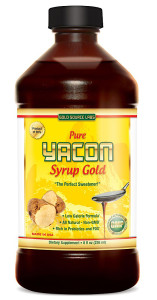Could Eating All That Fruit Be Making You Fat?
 Fruit is an important source of vitamins, nutrients and fiber.
Fruit is an important source of vitamins, nutrients and fiber.
It’s also a long-held favorite dessert in many parts of the world. Just like any other after dinner sweet, however, excess fruit sugar contributes to weight gain as well as a host of other health problems.
The Problem of Fructose
Fructose is the simple sugar found abundantly in fruits. It is also found in sucrose, standard table sugar. Sucrose is broken down to its component fructose and glucose molecules when ingested. While glucose is essential to life, fructose is not. This means that these sugars are handled very differently by the body.
 Fructose is converted to glucose in the liver and stored as fat when consumed in excess. Fructose is not the normal cue the body needs for satiety (fullness) or blood sugar regulation and therefore contributes to overeating while placing excess strain on the liver. This same type of sugar is now found in excess throughout the processed food industry, contributing to massive caloric over consumption and overt sugar addiction. In fact, even the smoothies you find at the mall or Jamba Juice can typically contains over 70 grams of sugar, despite their healthy reputation!
Fructose is converted to glucose in the liver and stored as fat when consumed in excess. Fructose is not the normal cue the body needs for satiety (fullness) or blood sugar regulation and therefore contributes to overeating while placing excess strain on the liver. This same type of sugar is now found in excess throughout the processed food industry, contributing to massive caloric over consumption and overt sugar addiction. In fact, even the smoothies you find at the mall or Jamba Juice can typically contains over 70 grams of sugar, despite their healthy reputation!
The Benefits of Fructans
Fortunately, there exist other sweet molecules without detrimental metabolic impacts. Fructans are chains of fructose molecules that are indigestible. This means that although they taste sweet, they can not be converted to sucrose or stored as fat and instead act as a soluble fiber. Fructooligosaccharides (FOS) are short chains of fructans and inulin are long chains, all of which provide this spectrum of beneficial properties.
Fibers aid in weight management by slowing digestive emptying (how fast food moves from the stomach into the small intestine) and thereby enhancing satiety. The naturally sweet fructan fibers, FOS and inulin provide the additional benefits of functioning as prebiotics. Whereas probiotics are comprised of gut-friendly bacteria, prebiotics are the substrates (food) on which such good gut flora flourish.
Understanding Blood Sugar Regulation
Glycemia refers to the amount of sugar in the blood and maintaining an ideal range (normoglycemia) is important for the body to function optimally. This balance is achieved largely through the blood sugar lowering effects of insulin, which is released from the pancreas in levels according to fluctuations in blood sugar values.
While the long-term hormonal impact of poor blood sugar control may take time to become apparent through diseases such as diabetes, the weight gain caused by excess sugar can be more immediate. Insulin not only stimulates the body to use up the sugar in the blood, it also causes any excess to be stored for later energetic needs in the form of fat.
Understanding the Glycemic Index
Scientists studying digestive health at the University of Sydney established the Glycemic Index in 1995 as a means for identifying the impact of food on blood sugar levels. As they uncovered, it is not the total sugar or caloric values associated with any given food that determine its effect on the body. It is instead a more complex interplay of speed of gastric emptying and the release of hormones, including insulin, that dictates to what extent the blood sugar regulating pancreas will be overwhelmed, and how readily food will be used for energy, or stored as fat.
Foods with a low glycemic index, such as olive oil, are associated with slow gastric emptying and an associated slow rise in blood sugar levels. In contrast, high glycemic index foods cause a rapid spike in blood sugar values, bringing an equally dramatic demand for insulin from the pancreas.
 Yacon: the Ultimate Low-Glycemic Sweetener
Yacon: the Ultimate Low-Glycemic Sweetener
In the search for optimal dietary enjoyment and health sustainability, a low-glycemic sweetener presents the area of greatest potential benefit. As it turns out, the Incas and other indigenous peoples of South America have been cultivating an ideal sweetener for centuries. The yacon plant, grown in abundance throughout the Andes mountains, is the source of a sweet syrup with a delicious flavor similar to molasses.
While the primary sugar found in fruit is fructose, it is fructooligosaccharides and inulin that make yacon so sweet and create its low glycemic profile.
Yacon Syrup in a Weight Management Strategy
With a bit of background on just what is Yacon Syrup, it becomes clear that this natural source of FOS can be an important tool in a healthy weight management strategy. The Yacon Syrup glycemic index is near zero, the caloric content is half that of table sugar, and the prebiotic soluble fibers enhance digestive health.
Yacon Syrup benefits weight loss as well as overall health status. Additional Yacon Syrup benefits have been shown to include improved fat burning rates, normalized cholesterol levels and enhanced liver function. Yacon is also being studied for its potential anticancer effects.
 Making the Most of Yacon Syrup Benefits
Making the Most of Yacon Syrup Benefits
Integrating Yacon Syrup into an everyday diet couldn’t be easier. Try it anywhere sugar, honey or molasses might normally be used, such as coffee, tea and baked goods. Its liquid format makes it perfect to add directly to smoothies and other beverages. As a guide, Yacon Syrup is substituted for sugar at a ratio of 3/4:1 and for maple syrup or molasses at a 1:1 ratio. Keep in mind that the flavor is slightly different and be open to the delicious new healthier recipes that will emerge from its use.
But what is Yacon Syrup if not a health promoting tool? Don’t wait for baking inspiration to strike. Take a spoonful of Yacon Syrup each morning and immediately start enjoying the sweet health benefits.
If you’ve enjoyed this article, please link back to us at:
[https://goldsourcelabs.com/?p=630]

This was a really wonderful post. Thank you for supplying this info.
One can attain a great figure while at the same time remaining healthy. Well, mainly by encouraging the body’s production of adiponectin, a natural protein which speeds up the breakdown of fat. It’s great that you can just buy your products online instead of having to run around town looking for them.
Tune into your body and start to listen to what it is telling
you: imagine you are in a teeny tiny bikini while you are at
work or out and about, and you will actually stand and sit straighter!
I monitor the intake of salt and pursue those foods that are high in fiber and carbohydrates. I’m also active with dance. If dancing is not your thing, try joining a walking club or finding another hobby, and stay active.
I want food to be a source of nutrition for me, not a binge habit.